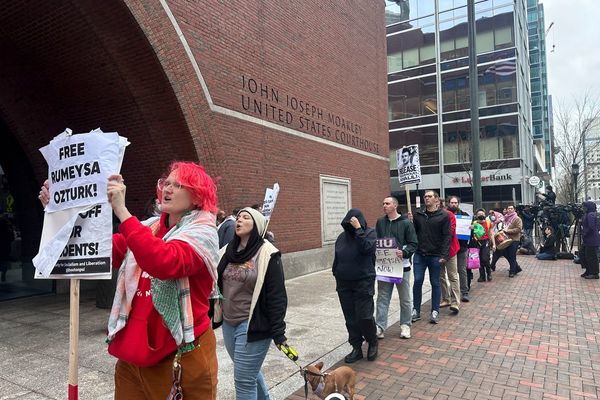Matt Kean, the chair of the Climate Change Authority and a former New South Wales Liberal energy minister, has told a parliamentary estimates hearing there is “no bigger rent-seeking parasite than the nuclear industry” during a heated exchange with pro-nuclear senators.
Appearing at estimates for the first time since his appointment in June, Kean argued with the independent senator Gerard Rennick about the cost of nuclear, telling the hearing: “If you want to see who are needing rent-seeking [and] trying to pull one over the eyes of the Australian public, it’s the nuclear industry.”
Kean said the nuclear industry was “there propping up the coal industry, who want to extend their business models, squeeze out the last bits of profit at the expense of Australian consumers”.
He also clashed with the Nationals senator Ross Cadell over analysis by Australia’s science agency CSIRO, which found nuclear was the most expensive form of large-scale energy available, estimating an initial plant could cost more than $16bn.
Kean told Cadell “most rational people do trust the CSIRO, this is the body that developed wifi” and that their advice “is good enough for me and it should be good enough for our political leaders”.
Cadell responded by accusing the authority chair of not questioning things or looking for truth.
“I know you’re trying to get your grabs up on Sky at the moment,” Kean told the senator.
He later told Rennick that advice from CSIRO and the Australian Energy Market Operator was that the cheapest way to replace Australia’s ageing electricity infrastructure was with renewables.
The Coalition has proposed seven sites where it says it would eventually replace coal-fired power plants with nuclear plants but not how much this would cost.
Multiple energy analysts have argued nuclear energy would be more expensive than other options and a nuclear industry would not be possible in Australia until after 2040.
The bulk of the country’s coal plants are scheduled to close in the 2030s.
The opposition has suggested it would limit the rollout of large-scale renewable energy – it has criticised Labor’s goal of 82% renewable energy by 2030 – and bridge the gap by keeping ageing coal plants running longer and using more gas-fired power.
With nuclear banned, gas is the most expensive form of electricity in the national electricity market and its use is largely restricted to “peaking” power turned on only when needed. It provided less than 3% of electricity in the national grid over the past month.
The chair of the Australian Energy Regulator, Clare Savage, told a parliamentary inquiry she did not believe nuclear plants could be built in time to cover the closure of coal-fired power plants.







